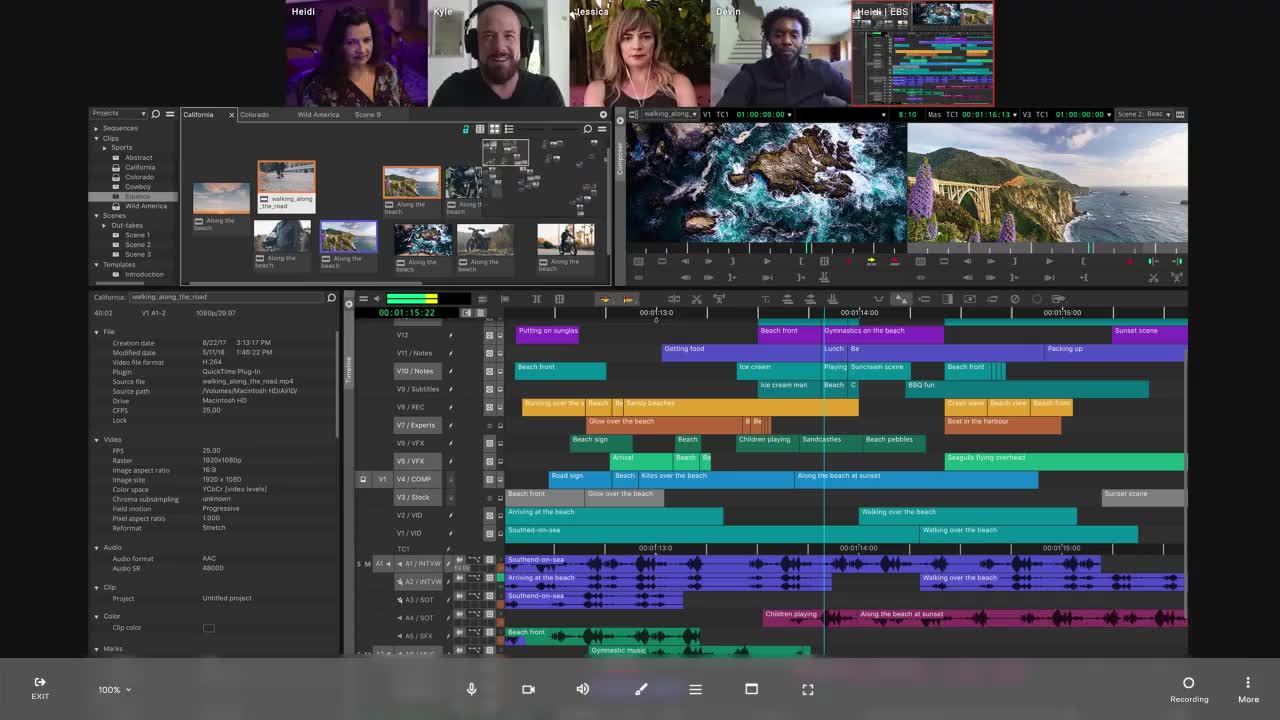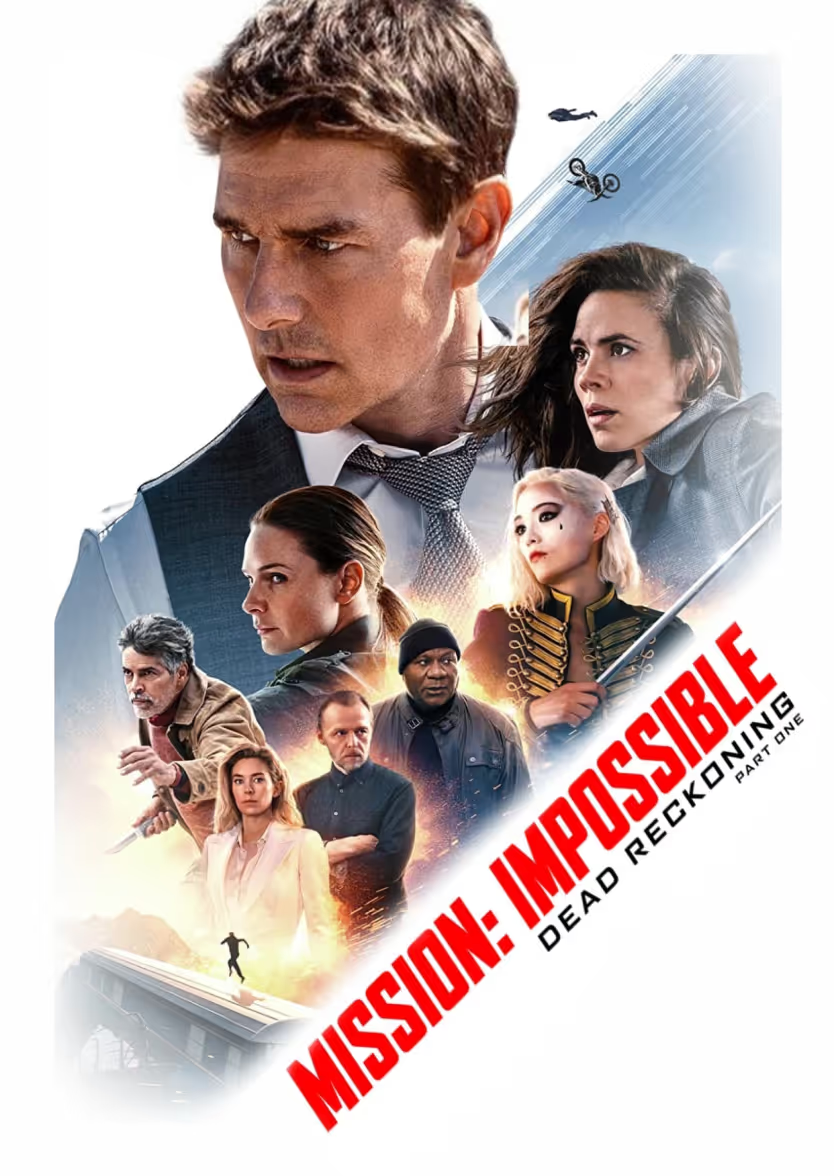As creatives ourselves, we understand that creative professionals thrive when they can focus on bringing their visions to life, without getting bogged down by unreliable technology. That’s why we’ve built a solution designed to stream high-quality content in real time, and collaborate seamlessly in the process. It’s also why we work so hard to meet the constantly changing needs of our users.
That said, we recognize that every team is different — and Evercast may not be the perfect fit for everyone. Some teams and independents seek out Evercast alternatives because budget may be their first priority.
But if crystal clear quality, ultra-low latency, rigorous security, and real-time collaboration software are essential to stream, review, and approve creative work — then Evercast is your best bet.
While we’re not built as a one-size-fits-all video conferencing platform, our mission has always been to help storytellers, editors, and other creative professionals take their projects from vision to fruition.
So, to support your search for the right solution, we’ve put together a list of five top alternatives to Evercast. This guide will allow you to compare features, drawbacks, and pricing so you can see how they stack up against Evercast, and ultimately find the right platform for your needs.
1. cineSync
cineSync is a remote review and approval tool designed for visual media teams to watch and annotate high-resolution content in sync.
cineSync key features
1. Frame-accurate remote playback
Allows users to view the same file, frame-accurately and in sync, at up to 4K/60fps.
Does Evercast have this feature?
Yes - plus it supports live streams from editing software, live cameras, and other sources beyond just uploaded files, all with ultra-low latency (<100ms) and 10-bit color fidelity.
2. Real-time annotation tools
Users can draw directly on video frames to provide visual feedback.
Does Evercast have this feature?
Yes - with markup tools that layer over live content, so teams can mark-up material during live or pre-recorded review sessions.
3. Encrypted, secure review sessions
cineSync uses end-to-end encryption and watermarking for content security during remote review/collaboration sessions.
Does Evercast have this feature?
Yes. Evercast uses studio-grade encryption, watermarking, and session-level access controls to meet the security standards of film and TV productions, even in live-streamed environments.
cineSync’s drawbacks
1. No built-in video conferencing
Teams must use a separate video conferencing platform for live discussion, forcing users to switch between multiple tools to review and provide feedback.
Evercast integrates video and group chat natively, keeping communication and collaboration in one place.

2. Requires all files to be local
Every participant must download the media before review. This can create issues with version control, as well as add time and increase storage demands for every user.
Evercast allows real-time broadcast from virtually any source from editing tools to live cameras without any need for individual downloads, allowing for more efficient playback and collaboration sessions.
3. Review, not collaboration
cineSync’s synchronized playback architecture is designed for scheduled, markup-focused reviews, not live collaboration sessions where changes can be made on the fly. This can often result in a slow, lengthy, and repetitive workflow.
Evercast supports real-time annotation and collaboration for live reviews, offering an always-on creative space and workflow that solve problems in the moment, instead of creating a repetitive feedback loop.
cineSync’s pricing
If you need collaboration tools, you’ll need the Pro plan of cineSync, which costs $99/month per user.
Create together remotely, in real time

2. Zoom
Zoom is a widely used general-purpose video conferencing platform that supports virtual meetings, screen sharing, and chat across devices.
Zoom key features
1. Video conferencing
Enables real-time face-to-face communication during sessions.
Does Evercast have this feature?
Yes - plus provides an audio mixer with per-user volume control and options to hide participant thumbnails to reduce CPU load, allowing for better performance and playback control.
2. Screen sharing
Lets users share their desktop or applications with others in the session, allowing for live feedback and discussion when viewing content.
Does Evercast have this feature?
Yes - with smoother, higher-quality, and color-accurate streaming (up to 4K/60fps/10-bit 4:4:4). It also supports streaming from devices beyond computer/tablet/mobile, such as live video cameras on set.
3. Session recording
Zoom provides meeting recording, complete with video and audio, allowing you and your team to review previous sessions.
Does Evercast have this feature?
Yes - with time-coded notes and frame-accurate annotations—making it easier to capture elements specific to creative workflows.
Zoom’s drawbacks
1. Limited playback quality
Screen sharing maxes out at 1080p, lacks color fidelity, and lacks guarantees on playback sync—all crucial to studio-grade projects.
By contrast, Evercast handles 4K/60fps streaming with 10-bit 4:4:4 color and under 100ms of latency, ensuring accuracy with both image quality and sync between session members.
2. Basic annotation tools
Annotations lack precision, advanced controls, and aren’t timeline specific, making their usefulness in high-accuracy projects extremely limited.
Evercast provides frame-specific markup with professional drawing controls specifically designed for VFX and editing workflows, so your collaborators have a clear picture of what/when changes need to be made with crucial accuracy.
3. Weaker security and privacy features
Zoom has faced vulnerability issues like “Zoom-bombing” and premium security features require higher-tier plans.
Not only did Evercast receive the Gold Shield from the Motion Picture Association’s Trusted Partner Network, but it uses studio-grade encryption, supports forensic watermarking, and offers granular session access controls tailored for sensitive media, IP, and discussions.
Zoom’s pricing
To avoid a 40-minute meeting cap, you’ll need at least a Pro plan ($14.99/mo per host). Business and Enterprise plans are custom and scale with features.
3. ClearView Flex
ClearView Flex is a hardware-based streaming solution for high-fidelity audio and video playback and review.
ClearView key features
1. Low-latency streaming
Streams up to 2K DCI with support for stereo and 5.1 surround sound.
Does Evercast have this feature?
Yes - and it extends support up to 4K/60fps, 10-bit color, 5.1 and 7.1 surround sound (and also has automatic downmixing for session members only using stereo playback).
2. Secure streaming
Content is protected by encrypted session and dynamic watermarking, with support for secure access controls.
Does Evercast have this feature?
Yes - with studio-grade encryption, watermarking, and session-level access governance to ensure sensitive material is kept protected at all times.
3. In-channel voice chat
Provides built-in voice chat embedded into the session stream for live review and discussion.
Does Evercast have this feature?
Yes. It also provides built-in video conferencing and group chat, so all methods of communication are available during sessions.
ClearView Flex’s drawbacks
1. Requires proprietary hardware + setup
Users need proprietary hardware or AWS configuration, which adds cost and complexity.
Evercast is software-only and even has a browser version, so it requires no specialized hardware and can be used with a quick and easy account setup.
2. No video conferencing or visual tools
Voice chat only; no built-in webcam or annotation tools that are often necessary for effective review and feedback.
Evercast provides real-time video conferencing, live drawing tools, and integrated chat, providing a rich creative/collaborative environment.
3. Limited flexibility
ClearView Flex sessions are anchored to one physical box and may also need to rely on file uploads for certain workflows, so they’re not well-suited for on-the-fly sessions or global flexibility.
Evercast supports flexible sessions from a variety of devices and from anywhere, with no additional hardware needed.
ClearView’s pricing
Plans start at $638/month + $350 setup fee (Starter). For those who need HDR and 10-bit 4:2:2 support, the Glow plan is $1,614/mo + $500 setup fee.
4. Frame.io
Frame.io is a cloud-based video collaboration platform that lets users upload assets, leave detailed feedback, and track revisions.
Frame.io key features
1. Frame-accurate annotations
Users can place time-coded comments and drawings directly on specific frames of uploaded footage.
Does Evercast have this feature?
No, but something similarly useful. During recorded live sessions, time-stamped comments can be created within the recording, allowing them to be referenced upon review.
2. Version history and asset management
Every upload or revision is tracked, making it possible to switch between versions easily.
Does Evercast have this feature?
Not exactly, but close. Evercast facilitates session recording with time-stamped notes and annotations, letting users revisit previous sessions with full context.
3. Adobe and Creative Cloud integrations
Frame.io directly integrates with Adobe Premiere, After Effects, and DaVinci Resolve to simplify asset uploads.
Does Evercast have this feature?
Yes - with the added ability to stream content in real time from any creative app.
Frame.io’s drawbacks
1. No live real-time collaboration
Frame.io focuses on asset upload and asynchronous feedback. It doesn’t offer live video/audio conferencing/collaboration.
Evercast supports live, real-time, broadcast-quality streaming with built-in video, audio, and chat conferencing (plus collaborative tools).
2. Upload-and-wait workflow
All content has to be rendered and uploaded before review — a process that can be notoriously slow and often delays feedback cycles.
Evercast requires no uploading or waiting. By streaming in real-time from a variety of apps, cameras, or files, any team can collaborate quickly and easily.
3. User and platform limitations
Frame.io’s starter plans cap active projects or the number of session members — and there’s no Android app.
Evercast plans offer nearly unlimited participants and support cross-platform access, from desktop to iOS/Apple TV, to Android and beyond.
Frame.io’s pricing
Free for two users with limited storage. Pro plans start at $15/user per month. Advanced and Enterprise options require a custom quote.
5. Louper
Louper is a browser-based collaboration platform that supports live high-quality streaming, frame-accurate notes, and built-in video chat.
Louper key features
1. Live, high-quality audio/video streaming
Broadcasts high-resolution 4K content (with 8-bit color and stereo audio support as well) during streaming sessions.
Does Evercast have this feature?
Yes - with support for 10-bit 4:4:4 color fidelity, as well as 5.1 and 7.1 surround sound for post and finishing workflows.
2. Integrated conferencing
The platform includes video chat during the streaming session, enabling live discussion alongside shared content.
Does Evercast have this feature?
Yes - with additional tools like chat messaging, collaborative tools like annotation, and individual audio routing.
3. Password-protected sessions
Provides basic security like passphrase-protected rooms and watermarking.
Does Evercast have this feature?
As mentioned above, Evercast received the Gold Shield from the Motion Picture Association’s Trusted Partner Network. It also uses studio-grade encryption, supports forensic watermarking, and offers granular session access controls tailored for sensitive media, IP, and discussions.
Louper’s drawbacks
1. Limited fidelity
Louper maxes out at 8-bit color and stereo audio.
Evercast can handle 10-bit color and full 5.1/7.1 surround sound, providing the greatest fidelity for color-critical tasks and multichannel audio projects.
2. Browser-reliant and less stable
Louper runs via a browser and requires a secondary app, Louper Desktop Encoder, to stream into the video chat session, which is less efficient than options with native support.
Evercast provides native streaming capabilities all in one app (with versions for macOS, Windows, iOS, Apple TV, and Vision Pro) and streams with ultra-low latency (<100ms), providing reliability and stability no matter how or where users participate.
3. Lack of session features
Caps on time (8 hours) and participants (8) can severely limit larger teams or longer projects. Also no ability to playback past sessions.
Evercast offers session recording, unlimited durations, and much larger team support, including one-to-many streaming (up to 100 participants) as part of their premium version.
4. Limited support
Support is generally kept within business hours, leaving teams that work outside of them without much recourse.
Evercast provides 24/7 white glove support, so regardless of the time or technical issue, chances of project slowdown are minimized.
Louper’s pricing
Studio plan: ($109/mo, up to 8 participants, 8-hour limit). Larger teams require custom pricing.















.avif)









.avif)


.avif)